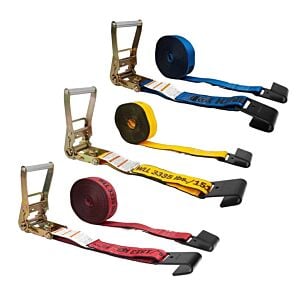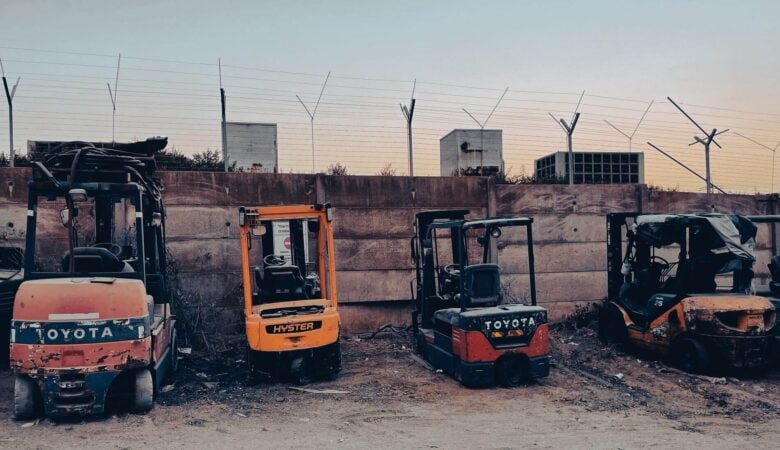Load safety is one of the most important aspects that must be taken care of. Cargo securement is not a difficult task but still proper attention is not given to it. If the load is not secured then it can be very dangerous as it can fall from the flatbed trailer and truck very easily. This can cause a lot of difficulties for other vehicles on the road and also pedestrians. Damages can be very high so it is important to ensure at regular intervals that load is safely tied down to the truck. There are some cargo control equipment that can be used for cargo securement
Basics of Cargo Securement
There are some basic points for cargo securement that must be followed before transporting any cargo. These points are mentioned below:
- Make sure the equipment used to tie down cargo are properly rated depending up on the load. With the help of these ratings you can know the overall strength, break strength, and working load.
- Check the ratchet straps regularly so that there is no damage or they are not worn out.
- It is highly recommended that you use a minimum of two Tie down straps even if one can do the job.
- Load must be firmly tied down to the flatbed trailer or truck and it should be balanced.
- If the trailer is enclosed then it doesn’t ensure that the load will be safe, additional security is always important.
- If there is vibration on the road then that can make the straps loose. Hence it is necessary to check them throughout the journey.
- If the height of the load is more, then extra security is needed to provide safety against wind resistance.
Steps to Prevent Load Securement Violations:
There are some common load securement violations as per commercial vehicle safety alliance (CVSA) such as,
- Lack of a sufficient number of tie-downs
- Use of damaged tie-downs
- Fail in securing truck equipment
- Use of loose tie-downs etc.
Now, lets check out some steps that you can take to prevent some of the common violations:

1) Shifting load:
If the cargo is not tied down properly then it is very dangerous and can cause a dreadful situation on the road. Even a small loose piece of cargo can be very dangerous for the whole flatbed trailer. Everything should be stable and stationery or else even the smallest of unstable load can cause a lot of problems. The deck of the flatbed trailer must be cleaned at the stops so that there is no dirt or any small stones that may cause an imbalance in the load.
If the load comprises of things like hay then it must be protected or secured with the help of hay tarps so that it does not spread on the whole deck. Shifting of load must be prevented and for that curves should be taken slowly and the speed of truck should be less on uneven grounds. These are some methods to stop the shifting of load.
2) Security Equipment:
Every piece of equipment that is on the flatbed trailer should be secured. The size and importance of flatbed accessories does not matter. This equipment can also include spare tires, tarps, shovels, chains, tarps, etc. Smaller equipment can be secured easily with the help of Utility straps and it is easy to handle them.
3) Keep Tie-downs in Top Condition:
The safety equipment used to protect the cargo should be in best condition. All the equipment should not be damaged or worn off or there should not be any holes. Here are some ways that can help you to keep this equipment in top-notch conditions,
a) Keep the Tie-downs Clean:
Cargo tie downs should be properly washed and any kind of dirt on the tie down straps should be removed. Later, they should be stored after they are completely dry.
b) Keep them Dry:
Hardware like chains, webbing, etc. must be dry and should be kept away from moisture. Exposure to moisture can cause the material to degrade and the quality of this equipment will be sacrificed. However, if there is no other option to protect them against moisture then you must select water resistant stainless steel.
c) Cover the Corners:
If the load that is being transported has sharp edges then that can cause damage to the straps. So in order to protect the straps from damage, corner protectors are mostly used. This protects your tie-down straps against any damage that can be caused from the load.
d) Do Not Drag Them:
The straps that are used for protection of load must not be dragged around as it will damage the strap. Instead, they should be stored using duct tape, bungee cords, or specially designed storage devices.
e) Replace at the Right Time:
No matter how many steps you take to protect the cargo straps, in the end they will get damaged and won’t last forever. So, it is important to check the cargo straps regularly and replace them as soon as they get damaged.
4) Have Enough Tie Downs:
It is very important to always have sufficient tie-down straps for your load. A total number of cargo tie downs generally depends upon the weight of load and the working load limit. According to Federal Motor Carrier Safety Administration (FMCSA) in terms of aggregate working load limit, the equipment used for securing the load must be at least half of the weight of the cargo. Depending upon the working load limit, take the sufficient number of tie downs required.
5) Tighten the Tie Downs:
This is one of the most common mistakes and can be easily avoided. Tie-down straps must not be loose and should be checked properly before starting the trip. Even throughout the trip, they must be constantly inspected at every stop to ensure the safety of the cargo. If they get loose at any point then they should be repaired or replaced instantly.
There are various rules and regulations set by FMCSA for cargo securement. The cargo securement rules ensure that the cargo is safe and the tie-down straps that are used are sufficient. It also focuses on the shifting or falling of load. All these rules and regulations helps in reducing the accidents that are caused due to improper cargo securement.
Conclusion:
All the mistakes can be avoided by proper checking of the equipment and keeping them in top conditions. Precautions must be taken so that everyone on the road and the cargo stays safe.












